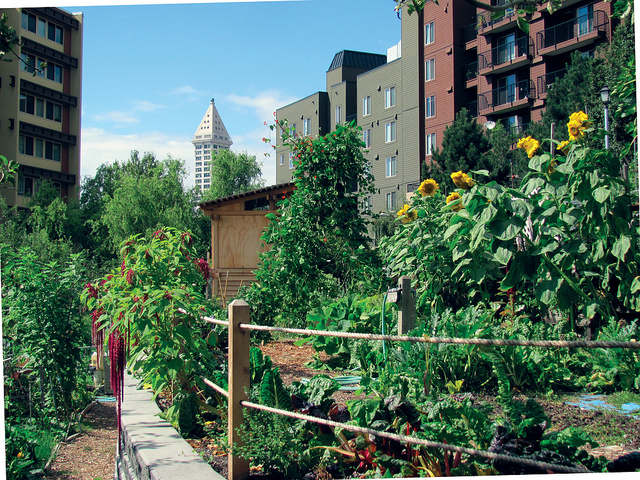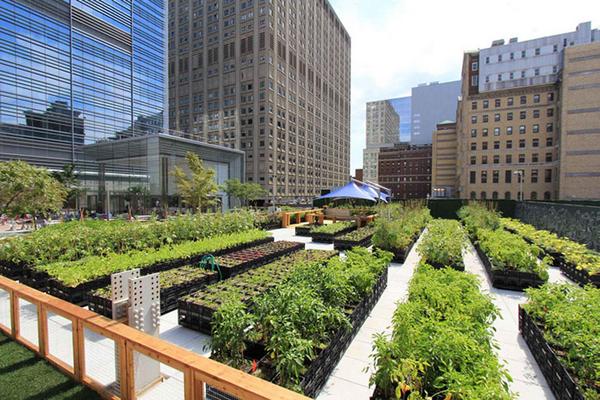Some Known Incorrect Statements About City Blooming
Table of ContentsGetting My City Blooming To WorkThings about City BloomingThe Only Guide for City BloomingGetting The City Blooming To WorkCity Blooming Things To Know Before You Buy
Fascinated in growing food up for sale in the City of Chicago? Considering starting an area garden? Changes to the Chicago Zoning Regulation enable agricultural usages like neighborhood yards and urban farms in many components of the city. Below is a listing of regularly asked questions regarding the regulations and guidelines that cultivators ought to take into consideration when planning a metropolitan farming job.
The zoning change does not modify any various other codes taking care of composting, building authorizations, purchasing or leasing City had residential or commercial property, company licenses or ecological contamination. There are existing codes that control these problems and they remain in complete result and might apply to your job. Area gardens are commonly owned or taken care of by public entities, civic organizations or community-based companies and preserved by volunteers.
Urban ranches grow food that is meant to be sold, either on a not-for-profit or for-profit basis. As a result of their industrial purpose, metropolitan farms need an organization permit. Yes. A community garden is allowed to market surplus produce that was grown on site if the sales are accessory or subordinate to the garden's main objective described over.
Not known Incorrect Statements About City Blooming
Composting is enabled but only for plant product that is created and made use of on website. The amount of garden compost product can not exceed 25 cubic yards at any given time according to the standards in 7-28-715 of the City's Municipal Code. Yes. Because the dirt at most brand-new garden websites requires modifying, garden compost, dirt, timber chips, or various other products can be obtained to construct or improve the growing area - garden care.

If a building authorization is called for then the hoophouse will certainly be considered an accessory structure. You can learn more concerning the structure license needs by contacting the Division of Structures. The 25,000-square-foot dimension limitation is planned to stop a solitary neighborhood yard from controling a given block or diminishing the block's existing residential or commercial character.
The restriction does not put on yards situated in Public Open Room (POS) areas. Can there be more than one neighborhood garden that is 25,000 square feet on a single block? Yes. The size limitation puts on private yards, not to individual blocks. No. Fencing is not called for, nonetheless, gardens that have big vehicle parking locations might be called for to mount fencing or other landscaping features.
Indicators on City Blooming You Should Know
B1 & B2 areas need that all commercial use activities be conducted indoors. R districts limit business activity. The regulations reflect the objective and intent of the Zoning Code. Is fencing required for city farms? Yes. Fencings may be required, in addition to landscaping and screening, for sure parking areas and exterior job or storage areas depending on place and the particular task happening.
Urban farms require structure authorizations and zoning authorizations prior to building and construction (landscaping). Other kinds of city review might be needed depending on particular frameworks, activities, dimension, landscape design, licensing, public health and stormwater monitoring issues.
Yes. The kind of certificate is identified by what is taking place at the site. The Division of Service Matters and Customer Security can assist determine the certain sort of service license that's needed. Yes. Off road vehicle parking is required for most industrial jobs in Chicago. The required variety of car parking areas is based upon the variety of staff members dealing with site and not the square video of the growing room.
The Basic Principles Of City Blooming

A metropolitan farm can offer compost product created on site, however, the operation should conform with the policies in 7-28-715 of the Chicago Municipal Code. Aquaponic systems are enabled inside your home on city ranches in many zoning areas.
Approximately 5 hives or swarms of honey bees may be maintained as an accessory use. However, beekeepers should sign up with the Illinois Department of Agriculture. To find out more concerning the proposed zoning amendment you might get in touch with the Department of Housing and Economic Advancement, Bureau of Planning and Zoning at 312.744.8563.
Farming in cities and city areas A city ranch in Chicago. Urban agriculture refers to numerous practices of growing. https://telegra.ph/City-Gardening-Embracing-Green-Spaces-in-Urban-Life-06-27, handling, and distributing food in city areas. The term likewise puts on the location activities of animal husbandry, tank farming, beekeeping, and gardening in a city context. Urban farming is distinguished from peri-urban agriculture, which happens in backwoods beside suburbs.
Getting My City Blooming To Work
It can entail an activity of organic cultivators, "foodies" and "locavores", who look for to create socials media based on a common values of nature and community holism. These networks can create using formal institutional support, becoming incorporated into local town as a "shift community" activity for sustainable metropolitan growth.
The extra straight access to fresh veggie, fruit, and meat products that may be realised with metropolitan farming can enhance food safety and food safety and security while lowering food miles, causing lower greenhouse gas exhausts, consequently adding to climate modification reduction. Some of the initial proof of city agriculture originates from Mesopotamia.